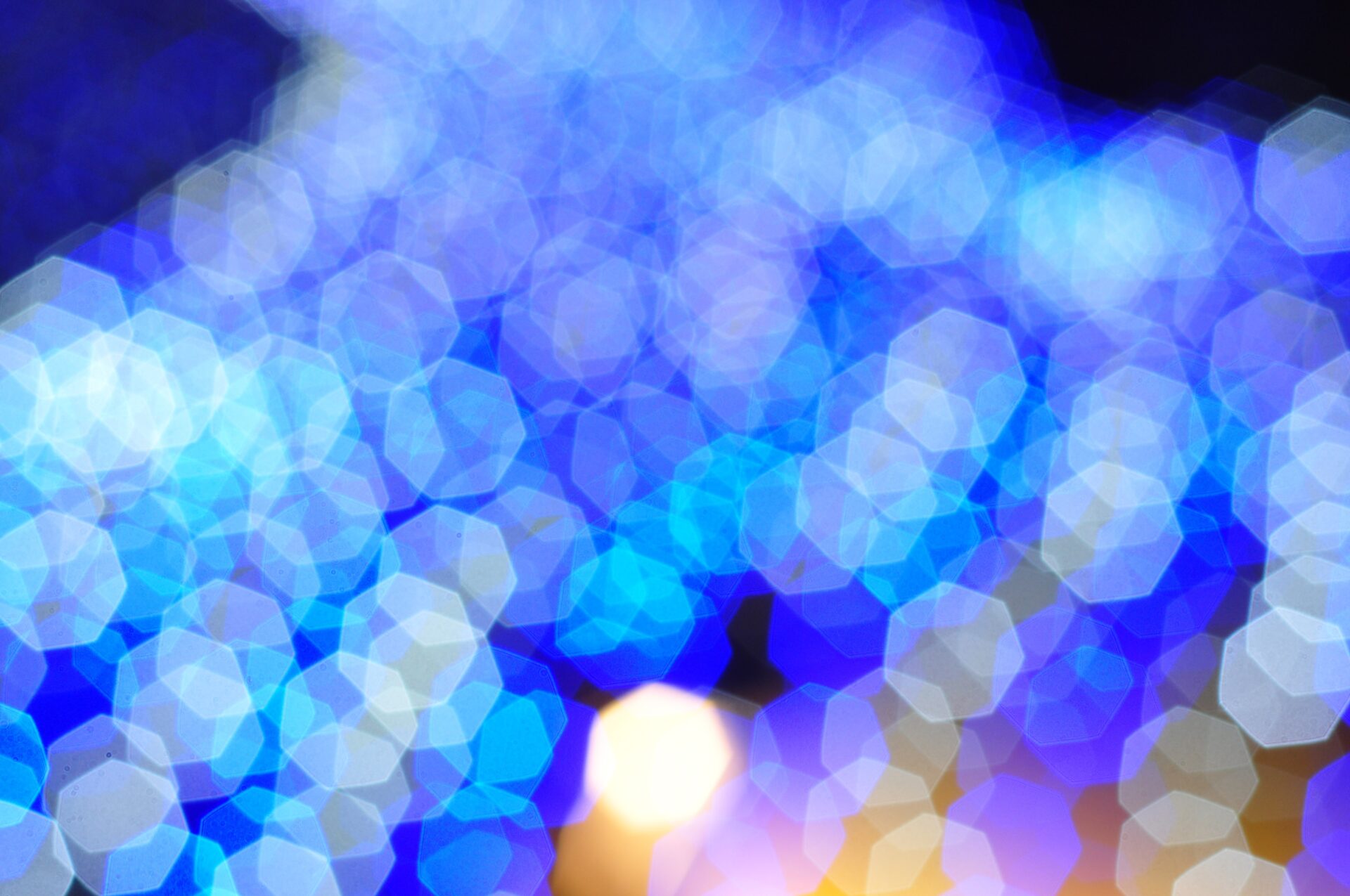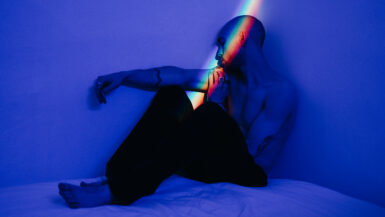In today’s fast-paced, technology-driven world, the impact of blue light on our sleep and productivity has become a topic of increasing interest and concern. In this article, we delve into the latest discoveries and advancements in blue light research, exploring its effects on our sleep patterns and overall well-being. By understanding the intricacies of this modern-day phenomenon, we aim to provide valuable insights into sleep optimization strategies and enhance our readers’ daily productivity. Join us as we uncover the complex relationship between blue light exposure, sleep quality, and the future of achieving a well-balanced, efficient lifestyle.
Strategies for Reducing Blue Light Impact on Sleep Quality
As our understanding of the effects of blue light on sleep quality expands, so too does the need for effective strategies to combat these negative consequences. By implementing simple yet impactful techniques to reduce blue light exposure, we can take a proactive approach to improve sleep quality and ultimately, boost productivity. In this section, we will discuss various strategies that can help minimize the impact of blue light on sleep, enabling you to achieve a more restful and rejuvenating sleep experience.
Embrace the Use of Blue Light Blocking Technology
One popular method for mitigating the impact of blue light on sleep is the use of blue light blocking technology. This can range from applications and software for your devices, such as smartphones, tablets, and computers, to specialized eyewear designed to filter out blue light. These tools work by reducing the amount of blue light emitted by screens or filtering it out before it reaches your eyes, thereby minimizing its impact on your sleep-wake cycle.
Create a Sleep-Friendly Environment
Creating a sleep-friendly environment goes a long way in promoting restorative sleep. This includes maintaining a comfortable bedroom temperature, using blackout curtains to prevent external light from entering, and eliminating electronic devices from the bedroom to avoid unnecessary exposure to blue light. Establishing a calming bedtime routine can also help signal to your body that it is time to wind down and prepare for sleep.
Implement a “Tech Curfew”
Setting a “tech curfew” can be an effective way to limit your exposure to blue light in the evening. This involves setting a specific time each night when you will stop using electronic devices, allowing your body to naturally adjust to the absence of blue light and prepare for sleep. By giving yourself an hour or two of screen-free time before bed, you can significantly reduce the impact of blue light on your sleep quality.
Expose Yourself to Natural Light During the Day
Exposure to natural light during the day, particularly in the morning, can help regulate your circadian rhythm and counterbalance the effects of blue light exposure in the evening. Spending time outdoors or near a window during daylight hours can help your body maintain a healthy sleep-wake cycle and improve overall sleep quality.
Stay Informed on the Latest Research
As our understanding of the relationship between blue light and sleep continues to evolve, it is crucial to stay informed on the latest developments in the field. For example, you may want to explore how blue light affects sleep and immune function to gain a deeper understanding of the potential long-term implications of blue light exposure on health and wellness.
By implementing these strategies, you can work towards minimizing the impact of blue light on your sleep quality and set yourself up for a more productive and well-balanced lifestyle.
Technological Solutions for Sleep Optimization
The constant advancements in technology have led to the development of innovative solutions that aim to optimize sleep quality and mitigate the effects of blue light exposure. In this section, we explore various cutting-edge tools and devices, which not only help improve sleep but also contribute to a better understanding of the intricate relationship between blue light and sleep. By harnessing the power of technology, we can take a more proactive approach towards achieving a well-rested and productive lifestyle.
Smart Sleep Trackers and Wearables
The market for sleep tracking devices has seen rapid growth in recent years, with a wide range of wearables and non-wearable gadgets designed to monitor and analyze sleep patterns. These devices can provide valuable insights into our sleep behavior, such as sleep duration, sleep stages, and quality of rest. By understanding our unique sleep patterns, we can make informed decisions to optimize sleep and reduce the negative impact of blue light exposure.
Blue Light Filtering Apps and Software
A variety of smartphone applications and computer software have been developed to help reduce blue light emission from screens. These tools work by adjusting the color temperature of your device based on the time of day or personal preference, ultimately reducing the amount of blue light reaching your eyes. By utilizing these apps and software, we can continue to use our electronic devices without significantly compromising our sleep quality.
Smart Lighting Systems
Smart lighting systems are another innovative solution that can contribute to sleep optimization. These systems can be programmed to automatically adjust the color temperature and brightness of the lights in your home, mimicking the natural progression of daylight. This can help regulate your circadian rhythm and promote a healthier sleep-wake cycle, counterbalancing the effects of blue light exposure from screens.
Advanced Sleep Aids and Therapies
Technological advancements have also led to the development of new sleep aids and therapies, such as sleep-inducing sound machines, targeted light therapy, and even brainwave entrainment devices. These innovative tools aim to address various sleep issues by providing personalized solutions based on individual needs and preferences. By exploring and incorporating these advanced sleep aids, we can work towards achieving better sleep and improved overall well-being.
Collaborative Research and Data Analysis
As technology continues to advance, our ability to conduct in-depth research and analyze large amounts of data also expands. This enables researchers to delve deeper into the complex relationship between blue light and sleep, developing a more comprehensive understanding of how to optimize sleep quality. By staying informed on the latest findings in blue light research, we can adapt our sleep habits and make use of the latest technological advancements to improve our sleep and productivity.
By exploring and embracing these technological solutions, we can take control of our sleep quality, minimize the negative impact of blue light exposure, and pave the way towards a more rested and productive lifestyle.
Blue Light Exposure and Circadian Rhythm Disruption
The influence of blue light on our sleep patterns and overall well-being is becoming increasingly important as we continue to rely on electronic devices in our daily lives. One key area of interest in blue light research is its impact on our circadian rhythm, the internal clock that regulates our sleep-wake cycle. The disruption of this essential biological process has been linked to a range of health issues and suboptimal cognitive performance. In this subsection, we dive into the connection between blue light exposure and circadian rhythm disruption, exploring the underlying mechanisms and potential consequences.
How Blue Light Affects Circadian Rhythms
Blue light, which has a wavelength of approximately 480 nanometers, is known to effectively suppress the production of the sleep hormone melatonin. This occurs through a complex process involving specialized cells called intrinsically photosensitive retinal ganglion cells (ipRGCs) located in the retina. These cells are particularly sensitive to blue light and play a crucial role in regulating our circadian rhythm. As a result, excessive exposure to blue light, especially in the evening, can lead to a delay in melatonin production, making it more difficult for us to fall asleep and potentially disrupting our natural sleep-wake cycle.
Health Consequences of Circadian Rhythm Disruption
The disruption of our circadian rhythm due to excessive blue light exposure has been linked to various health issues. These include sleep disorders, such as insomnia and delayed sleep phase syndrome, as well as an increased risk of obesity, diabetes, cardiovascular disease, and even some forms of cancer. Furthermore, inadequate sleep and circadian rhythm disruption can result in reduced cognitive function, negatively impacting our productivity, decision-making, and overall mental health.
Personalized Approaches to Blue Light Management
Recognizing the potential consequences of circadian rhythm disruption, researchers are developing personalized approaches to blue light management. These strategies aim to optimize sleep quality and overall well-being by taking into account individual differences in circadian rhythm, light sensitivity, and lifestyle factors. For example, some individuals may benefit from reducing blue light exposure during specific time windows or adopting a tailored sleep schedule based on their natural circadian rhythm.
Advancements in Blue Light Research Methodologies
To further understand the impact of blue light on circadian rhythm disruption, researchers are employing advanced methodologies, such as real-time monitoring of melatonin levels, sophisticated imaging techniques to study retinal cells, and large-scale data analysis to uncover patterns and trends. These cutting-edge research methods are contributing to a more comprehensive understanding of the underlying mechanisms and potential interventions for blue light-induced circadian rhythm disruption.
By gaining a deeper understanding of the relationship between blue light exposure and circadian rhythm disruption, we can take proactive steps to protect our sleep quality and overall health. The future of blue light research and sleep optimization will undoubtedly continue to advance, providing us with valuable insights and tools to enhance our well-being in an increasingly digital world.
The Role of Blue Light Filters in Boosting Productivity
As we delve further into the future of blue light research and sleep optimization, the importance of blue light filters in enhancing productivity has become increasingly apparent. These innovative tools work by minimizing the amount of blue light exposure we receive from our electronic devices, mitigating the negative impact on our sleep and overall well-being. In this subsection, we explore the various ways in which blue light filters can play a significant role in boosting productivity, from improving sleep quality to promoting a healthier work-life balance.
Enhancing Sleep Quality for Increased Alertness and Focus
By reducing the amount of blue light exposure during the evening, blue light filters can contribute to improved sleep quality. This, in turn, results in increased alertness and focus during the day, allowing for better cognitive performance and productivity. By ensuring we are well-rested, we can tackle tasks more efficiently and effectively, ultimately leading to a more successful and fulfilling work life.
Preventing Digital Eye Strain and Its Impact on Productivity
Extended exposure to blue light from screens has been associated with digital eye strain, a condition characterized by symptoms such as dry eyes, blurred vision, and headaches. Digital eye strain can significantly hamper productivity by causing discomfort and reducing the ability to concentrate on tasks. Blue light filters can help alleviate these symptoms by minimizing the amount of blue light emitted by screens, thereby improving visual comfort and allowing for more prolonged periods of focused work.
Supporting a Healthier Work-Life Balance
By incorporating blue light filters into our daily routines, we can take a proactive approach to managing our exposure to blue light and the associated effects on our sleep and well-being. This can lead to a healthier work-life balance, as we prioritize rest and relaxation alongside our professional responsibilities. By fostering a more balanced lifestyle, we can improve our overall well-being and maintain a sustainable level of productivity in the long term.
Fostering a Culture of Sleep Awareness in the Workplace
The growing awareness of the impact of blue light on sleep and productivity has led to a shift in workplace culture, with many employers now recognizing the importance of promoting healthy sleep habits among their workforce. By adopting and encouraging the use of blue light filters, employers can contribute to a more sleep-aware work environment, ultimately benefiting both employees and the organization as a whole.
Staying Ahead of the Curve: Adapting to Future Technological Developments
As technology continues to evolve, so too does our understanding of the relationship between blue light exposure and productivity. Blue light filters represent an essential tool in our arsenal for managing the impact of blue light on our daily lives. By staying informed on the latest research and advancements in blue light filtering technology, we can adapt and customize our strategies to optimize sleep and productivity in an ever-changing digital landscape.
The role of blue light filters in boosting productivity is clear, as these tools contribute to improved sleep quality, prevent digital eye strain, and promote a healthier work-life balance. By embracing blue light filters and fostering a culture of sleep awareness, we can set the foundation for a more productive, balanced, and successful future in both our personal and professional lives.
Understanding Blue Light and Its Effects on Sleep
In order to grasp the future of blue light research and sleep optimization, it is crucial to develop a comprehensive understanding of blue light and its impact on our sleep patterns. This subsection delves into the crucial aspects of blue light, its sources, and the mechanisms through which it affects our sleep. By gaining a deeper understanding of these factors, we can better appreciate the significance of ongoing research and advancements in the field of blue light and sleep optimization.
The Science Behind Blue Light and Its Sources
Blue light, which lies within the visible light spectrum, has a wavelength of approximately 480 nanometers. It is known for its high energy levels and ability to penetrate deeply into the eye. Blue light can be found in various sources, both natural and artificial. The most significant natural source is sunlight, which contains a blend of all colors in the visible light spectrum, including blue light. Artificial sources of blue light include electronic devices, such as smartphones, computers, and televisions, as well as energy-efficient LED and fluorescent lighting.
Blue Light’s Impact on Melatonin Production
One of the primary ways in which blue light affects our sleep is through its impact on melatonin production. Melatonin is a hormone responsible for regulating our sleep-wake cycle, or circadian rhythm. Exposure to blue light, particularly in the evening, can suppress melatonin production, making it more challenging for us to fall asleep. This disruption of our natural sleep-wake cycle can lead to poor sleep quality and various health issues.
Disruption of Sleep Stages and Quality
In addition to its effects on melatonin production, blue light exposure can also impact the quality of our sleep by interfering with sleep stages. Our sleep is composed of several stages, including light sleep, deep sleep, and REM sleep. Each stage plays a vital role in our overall rest and recovery. Excessive exposure to blue light can lead to fragmented sleep, reducing the amount of time spent in the restorative deep and REM sleep stages, ultimately affecting our cognitive function and overall well-being.
Individual Differences in Blue Light Sensitivity
It is important to note that the impact of blue light on sleep can vary from person to person, with some individuals being more sensitive to its effects than others. Factors such as age, genetics, and lifestyle can all play a role in determining how blue light exposure affects an individual’s sleep quality. Understanding these individual differences is essential for tailoring personalized strategies to optimize sleep and mitigate the negative consequences of blue light exposure.
A Foundation for Future Blue Light Research and Sleep Optimization
A thorough understanding of blue light and its effects on sleep provides a solid foundation for future research and developments in the field of sleep optimization. As our knowledge of blue light’s impact on sleep continues to grow, researchers and innovators will be better equipped to design novel solutions and interventions for improving sleep quality and overall health. By staying informed on the latest findings and advancements, we can take an active role in shaping our sleep habits and harnessing the power of blue light research to enhance our well-being in a constantly evolving digital world.





Leave a reply